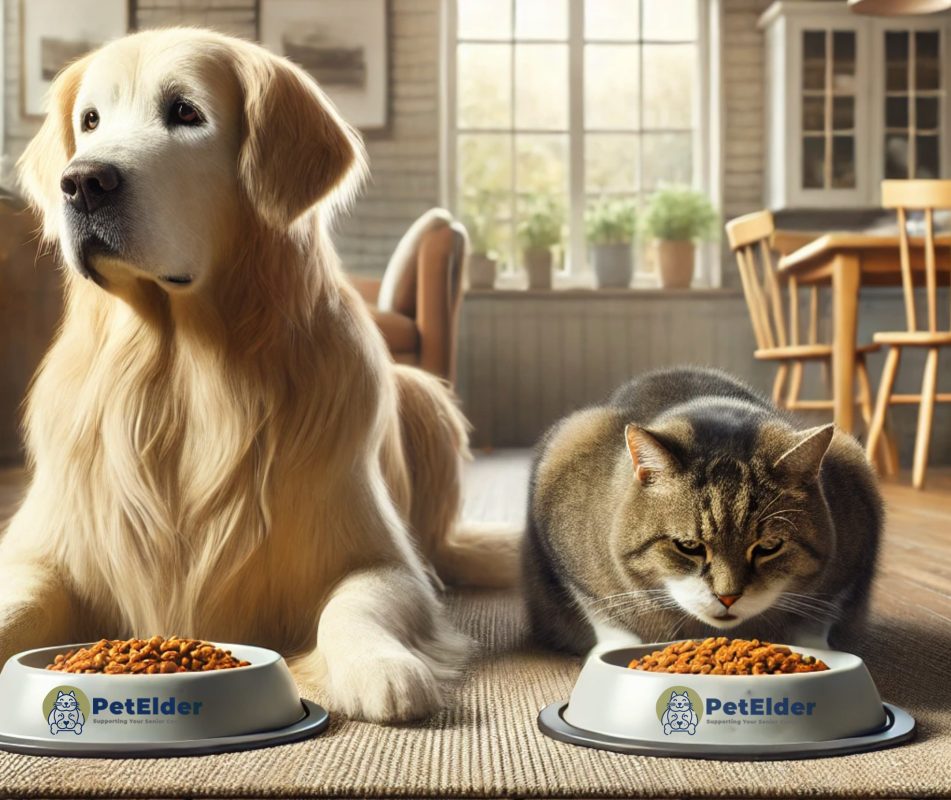Flat Plates for Senior Pets: A Simple Solution for Improved Eating Habits
As our furry friends age, their eating habits can change dramatically. If you’ve noticed your senior pet struggling at mealtime, you’re not alone. Many pet owners wonder, “Why isn’t my older dog eating like they used to?” or “How can I make mealtimes more comfortable for my aging cat?” The good news is that a simple switch to
flat plates for senior pets can make a world of difference.
Why Senior Pets Struggle with Traditional Bowls
Before we dive into the benefits of flat plates, let’s understand why our older companions might be having trouble with their usual feeding dishes:
- Decreased appetite due to diminished senses
- Discomfort from bending down to reach deep bowls
- Anxiety caused by whisker stress when eating from narrow containers
- Difficulty seeing or smelling food in deep bowls
These challenges can lead to reduced food intake, which is especially concerning for pets with specific dietary needs, like those requiring insulin.
The Flat Plate Advantage
Switching to a flat plate can address many of these issues. Here’s how:
1. Natural Eating Position
Flat plates allow our senior pets to eat in a more natural, comfortable position. This is closer to how they would eat in the wild, and it’s easier on their aging joints and muscles.
2. Reduced Whisker Stress
Without high rims, flat plates eliminate the discomfort caused by whiskers touching the sides of bowls. This is particularly beneficial for cats, who are sensitive to whisker stimulation.
3. Better Food Visibility and Aroma
A flat surface makes it easier for pets with diminished senses to see and smell their food, potentially stimulating their appetite.
4. Easier Cleanup
Surprisingly, flat plates can lead to less mess. Food is less likely to be pushed over the edge, and cleaning is a breeze.
Choosing the Right Flat Plate for Your Senior Pet
When selecting a flat plate for your aging companion, consider these factors:
- Material: Opt for BPA-free, non-toxic materials. Avoid stainless steel, which can retain radioactivity.
- Size: Ensure the plate is large enough to accommodate your pet’s meal without overcrowding.
- Non-slip base: Look for plates with rubber bottoms to prevent sliding during mealtime.
- Dishwasher safe: For easy cleaning and sanitization.
- Microwave safe: If you warm your pet’s food, this feature is handy.
Transitioning to Flat Plates: Tips for Success
Introducing a new feeding method can be tricky, especially with set-in-their-ways seniors. Here’s how to make the switch smoothly:
- Start by placing the flat plate next to their usual bowl, with food in both.
- Gradually move more food to the plate and less to the bowl over a few days.
- Offer praise and treats when they use the plate to create positive associations.
- Be patient – some pets may take longer to adjust than others.
Beyond the Plate: Other Mealtime Improvements for Senior Pets
While flat plates can significantly improve eating habits, consider these additional tips:
- Elevate the plate slightly for pets with arthritis or mobility issues.
- Warm food slightly to enhance aroma and palatability.
- Offer smaller, more frequent meals throughout the day.
- Ensure fresh water is always available in an easily accessible dish.
When to Consult Your Veterinarian
While flat plates can solve many eating issues, persistent problems warrant a vet visit. Consult your veterinarian if you notice:
- Sudden weight loss
- Complete refusal to eat for more than 24 hours
- Difficulty swallowing or chewing
- Vomiting or diarrhea alongside eating issues
Your vet can rule out underlying health conditions and provide tailored advice for your senior pet’s nutritional needs.
Frequently Asked Questions
Q: Can I use human plates for my senior pet?
A: While you can use human plates, pet-specific flat plates are often designed with non-slip bases and pet-friendly materials.
Q: How often should I clean my pet’s flat plate?
A: Clean the plate after each use, just as you would with any feeding dish, to maintain hygiene.
Q: My senior pet still prefers their old bowl. What should I do?
A: Some pets may take time to adjust. Try making the flat plate more appealing by adding favorite treats or a bit of wet food to entice them.
Q: Are flat plates suitable for all types of pet food?
A: Yes, flat plates work well for both dry kibble and wet food. They’re particularly beneficial for pets who prefer to lick their food.
Conclusion
Embracing
flat plates for senior pets can transform mealtime from a struggle to a joy. This simple change acknowledges our aging companions’ changing needs and helps ensure they continue to receive proper nutrition. By making this small adjustment, we’re not just feeding our pets – we’re enhancing their quality of life in their golden years.

